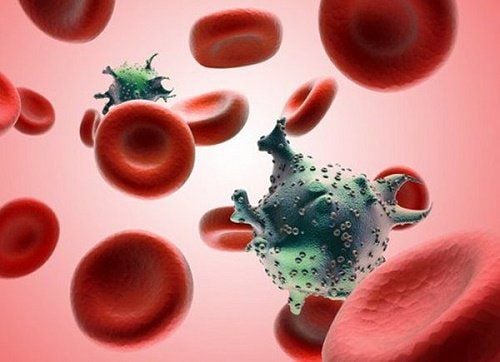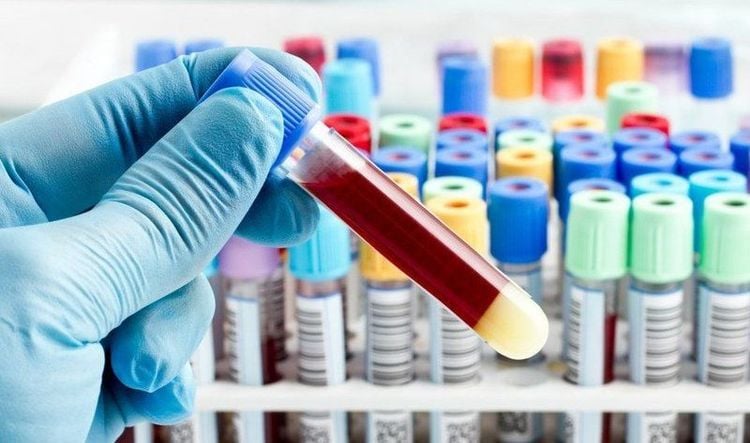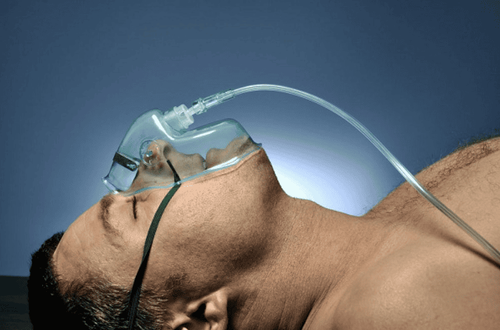This is an automatically translated article.
The article was professionally consulted by Doctor Do Tuong Huan - Oncology Center - Vinmec Central Park International General HospitalMany patients after being cured of cancer, after a period of time, there are signs of cancer recurrence and must continue to return to treatment. So why does cancer recur and how to deal with it?
1. Does the cancer come back?
Anyone is at risk of cancer, especially as the age increases, the body becomes aging, the resistance decreases, the likelihood of disease increases. However, modern medicine today has helped many patients overcome cancer thanks to great advances in surgery, chemotherapy or radiation therapy. But after finishing cancer treatment, patients cannot avoid the risk of cancer recurrence. This can happen years, months or even weeks after the cancer is cured. Doctors can't know for sure if the cancer will come back. In general, the recurrence rate of cancer depends on the type of primary cancer, the stage of the disease and many related factors. Your doctor can provide some more information about your risk of recurrence and why the condition is present.

2. Why does the cancer come back?
After the treatment is cured, signs of cancer recurrence may still appear because a small amount of cancer cells may remain, silently existing in the body. Over time, these cells grow and grow large enough to show symptoms or show up on imaging tests. Depending on the type of cancer, signs of recurrence have different characteristics, such as when and where they appear on the body. Cancer recurrence can manifest in the following ways:
Local recurrence: Malignant cells appear at the site of primary cancer; Regional recurrence: Malignant cells appear near the area of primary cancer; Distant recurrence: Malignant cells appear in a completely different place on the body and are almost unrelated to the previous cancer site. Recurring cancer is named after the original location of the cancer, even if it recurs in another part of the body. For example, if a patient has breast cancer but has distant recurrence in the liver, it is still called breast cancer, not liver cancer. More precisely, however, the condition is metastatic breast cancer. The term “metastasis” means that malignant cancer cells have spread to another organ in the body.
Trắc nghiệm: Thử hiểu biết của bạn về bệnh ung thư
Ung thư là nguyên nhân gây tử vong hàng thứ 2 trên thế giới. Thử sức cùng bài trắc nghiệm sau đây sẽ giúp bạn có thêm kiến thức về yếu tố nguy cơ cũng như cách phòng ngừa bệnh ung thư.
Bài dịch từ: webmd.com
3. Diagnosis of recurrent cancer
After treatment of the primary cancer, the patient will be cared for and monitored according to a specific post-treatment plan, including a schedule of periodic follow-up visits, including clinical examination and laboratory tests. another ready if necessary. These return visits and tests are important to check your health and monitor your risk of the cancer coming back. Depending on the specific type of cancer, the patient may need additional blood tests or imaging, but a thorough and careful clinical examination by the doctor is still the most important thing. In addition, the doctor will instruct the patient to pay attention to some symptoms and warning signs of cancer recurrence.
If cancer recurrence is suspected, the doctor will order the patient to perform some other tests to provide more information and confirm the diagnosis. These tests typically include blood tests, humoral tests, imaging studies, and specimen biopsies.

4. Treatment of recurrent cancer
Once a diagnosis of recurrent cancer has been confirmed, doctors will advise patients on treatment options. Treatment options for recurrent cancer are similar to those for the original primary cancer. To select an appropriate measure, physicians will consider the following factors:
Patient's goals; The size of the tumor, the type of cancer, the location where the cancer has recurred in the body; General health status; The initial and effective treatment is achieved; Side effects encountered with previous treatment; The time at which the previous treatment ended. The doctor may recommend that the patient participate in a clinical trial. When choosing between treatment options, it is important to consider the following:
Goals and expected benefits for each treatment option; Possible risks and side effects, compared with benefits; The impact of each treatment course on the patient's quality of life. Throughout treatment, minimizing symptoms and side effects remains an important goal in patient care and is known as palliative or supportive care. Patients should regularly talk to their doctor about all unusual signs, including new symptoms or changes in existing symptoms.
5. Coping With Cancer Recurrence
Patients with recurrent cancer may experience the same sensations as when they first had cancer. Depression, doubt, anxiety, fear, grief, and loss of control are common emotions. All of these are normal reactions of the patient when suffering from cancer. Some people are even more affected than the first.
Many patients with recurrent cancer express doubts about previous decisions or treatment options. However, in all cases, patients need to remember that at the time of first cancer diagnosis, the medical team relied on all available information and did their best to choose the right treatment option. best. Even so, the future of cancer remains unpredictable.
When diagnosed with cancer recurrence, many people feel worried about whether they are healthy and mentally strong enough to cope with the disease and the treatment sessions. Meanwhile, many patients find that previous cancer treatment experience can help them better prepare and be ready to face the challenges that are coming. As such, people with recurrent cancer can take advantage of certain advantages:
Gain insight into previous cancer conditions, thereby reducing feelings of fear and anxiety related to the unknown know; Relationships with doctors, nurses, and staff at the facility who have previously treated and understand the patient's health condition; Knowledge of medical knowledge, commonly used medical terms, and health insurance coverage related to pre-existing medical conditions; Knowledge of treatment methods and associated side effects, as well as measures to manage; Supportive relationships, including family and friends, community groups and trained professionals to provide emotional support; Learn some ways to reduce stress, like exercising, meditating, or spending time doing things you enjoy, with family and friends. In general, cancer recurrence does not depend on the type of cancer, the stage of the disease, the patient's health status and many other factors. Feeling down after a diagnosis of cancer recurrence is a common problem in most patients. To assist in coping with the illness, families should seek professional help during prolonged treatment and removal of obstacles to daily activities. Patients can join face-to-face support groups and online communities to share their feelings and treatment experiences with other patients in similar situations.
Please dial HOTLINE for more information or register for an appointment HERE. Download MyVinmec app to make appointments faster and to manage your bookings easily.
References: Cancer.net
MORE:
Cancer recurrence: Why and how? How to overcome cancer treatment fatigue Pain treatment and palliative care for terminal cancer patients













